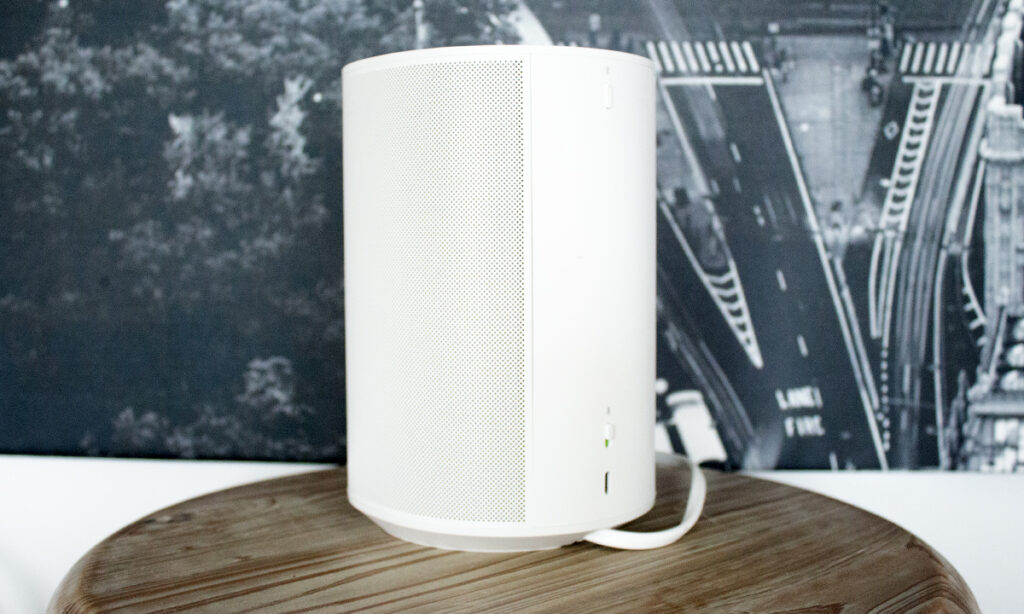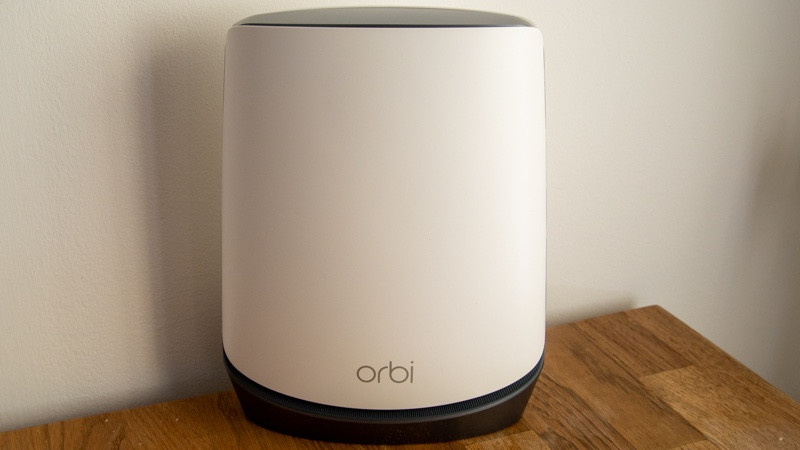
Our guide to the latest Wi-Fi standards coming your way
Wi-Fi has moved beyond giving us a more convenient internet connection for our laptops and is now the basis of everything in our home – from smart speakers, to security cameras, robot vacuum cleaners, streaming video, music an.
With this increase in use has come the new problem of how a wireless network deals with an ever-growing number of devices. Enter Wi-Fi 6 to save the day… and then Wi-Fi 6E to then blow that out of the water. But don’t stop there; Wi-Fi 7 is on the horizon, promising to redefine wireless connectivity yet again.
It’s hard to keep up with the latest Wi-Fi standards that are powering your smart home, and that’s where this guide comes in.
Why is it called Wi-Fi 6?
Wi-Fi devices used to be sold under the banner of the IEEE standard that they adhered to. Technically, then, Wi-Fi 6 is the 802.11ax standard, but the confusing array of numbers and letters makes it practically impossible for any normal people to know which one is the latest and best.
Using a simple naming convention makes it far easier to see which standard is the most recent, particularly as the older standards have been renamed, too.
As well as rebranding Wi-Fi 6, the older networking standards have been renamed, too, so 802.11ac (the version we’ve all been using for years) is now called Wi-Fi 5, and 802.11n (the previous generation we all started on) is now Wi-Fi 4. The naming goes all the way down, but you’re unlikely to encounter any Wi-Fi 3 or older devices.
Rebranding everything will take time, so expect to see Wi-Fi 6 used on all new products, while older products will still most likely carry some mixed branding, with the old names used a lot.
Yes, it’s a little messy, but it should become more straightforward in time. Or at least that’s the idea.
What do I need to get Wi-Fi 6?
Wi-Fi 6 is available now with in many routers nowadays, including the likes of the Netgear Orbi WiFi 6E and the Eero Pro 6 Plus.
All Wi-Fi 6 routers are backwards compatible with older Wi-Fi 5 devices, although you won’t get any of the speed and concurrent device improvements that the standard supports.
For the complete package, you also need to have Wi-Fi 6 devices. The latest smartphones and tablets all support the standard, and the new Intel chipsets mean that we’re starting to see more and more laptops with the technology, too.
Streaming sticks and boxes such as the latest Apple TV 4K and Fire TV also all boast Wi-Fi 6 credentials, as do the latest Sonos Speakers such as the Era 300 and Era 100 and we’re even seeing Wi-Fi on security cameras like the Reolink Argus Pro.

How fast is Wi-Fi 6? Let’s get technical
Headline speeds of Wi-Fi 6 have been improved over Wi-Fi 5 devices, with the current range of routers offering a total throughput of up to 6Gbit/s; faster speeds are coming, too, with routers that will comfortably able to deliver more than 10Gbit/s.
But get this: Wi-Fi 6 isn’t really about the blistering top speeds. Rather, it’s about delivering consistently high speeds to more devices than Wi-Fi 5 could handle.
To do this, Wi-Fi 6 has some big changes from the older Wi-Fi 5, so excuse us while we get very technical for a moment.
The first big change comes with the Quadrature Amplitude Modulation (QAM). QAM defines the number of bits that can be encoded and transmitted per time unit. Effectively, the higher the QAM standard used, the more bits can be transmitted, increasing throughput.
Wi-Fi 5 uses 256-QAM, which allows for 8-bits to be sent, whereas Wi-Fi 6 uses 1024-QAM, or 10-bits. Using the same radio bandwidth, Wi-Fi 6 can transmit 25% more bits than Wi-Fi 5. On paper, this makes Wi-Fi 6 25% faster. Still with us?
It’s not so much overall speed that defines Wi-Fi 6, but how the technology allows a router to communicate with different devices at the same time, giving each dedicated bandwidth.

There are two main ways to do this. First, we have Multi-user Multiple Input Multiple Output (MU-MIMO), which lets a router use separate streams to communicate directly with different devices. The number of streams is usually presented as a figure, such as 8×8: this means that a router has eight uplink and eight downlink streams.
With this configuration, a router could talk directly to eight devices using a single stream each, or it could support four devices using two streams each. That gives flexibility, as one gadget can connect and use a lot of bandwidth, but busy networks can reduce the total amount of bandwidth a device gets in order to support more connections.
The real benefit will come when running multiple devices at one time
It also gives router manufacturers the option of how they want to split up the total bandwidth. For example, the Netgear Nighthawk AX8 has four streams in the 5GHz channel running at 4.8Gbit/s total (1.2Gbit/s per stream); the Nighthawk AX12 has the same 4.8Gbit/s limit but runs eight streams at 5GHz (600Mbit/s each) to support more devices.
Once the number of devices exceeds the number of streams, Wi-Fi 6 has to start sharing streams between multiple devices; however, the higher number of streams available still increases the load a network can take.
Importantly, while 802.11ac only had downlink MU-MIMO (the router could send data to multiple clients concurrently), 802.11ax also supports uplink MU-MIMO (the router can simultaneously receive from multiple clients).
Wi-Fi 6 also introduces something called Orthogonal Frequency-Division Multiple Access (OFDMA). While it sounds super technical, OFDMA simply lets wireless channels be broken down into smaller units, so the same transmission can be shared between multiple devices. It’s kind of like the network equivalent of a delivery truck that has multiple parcels for different customers.
OFDMA and MU-MIMO can be used at the same time, further increasing the number of devices that can communicate at the same time.

Enter Wi-Fi 6E and Wi-Fi 7: The Future of Wireless
While Wi-Fi 6 is a significant upgrade, Wi-Fi 6E is an even bigger leap forward. The “E” stands for “Extended,” and it represents an expansion of Wi-Fi into the 6GHz band. This new band offers more spectrum, which means less congestion and faster connections, especially in areas with a lot of wireless devices.
The 6GHz band provides seven additional 160MHz channels, allowing for multiple high-bandwidth applications like 4K video streaming, virtual reality, and more without interference. Wi-Fi 6E is particularly beneficial for environments with many devices, as it reduces the chance of overlapping signals and interference that can slow down your connection.
But what about Wi-Fi 7? This upcoming standard, also known as 802.11be, is expected to push the boundaries even further. Wi-Fi 7 introduces features like 320MHz channels, doubling the bandwidth of Wi-Fi 6E, and also supports 4K-QAM, which allows for even more data to be transmitted simultaneously.
Wi-Fi 7 could deliver speeds up to 30Gbps, a massive leap over current capabilities and we’re already seeing the likes of Netgear, TP-Link and Eero introduce Wi-Fi 7 routers.
Wi-Fi 7 also brings Multi-Link Operation (MLO), which allows devices to connect on multiple bands (2.4GHz, 5GHz, and 6GHz) simultaneously. This not only increases speed but also improves reliability, as the device can switch between bands to maintain the best connection.
Wi-Fi 7 is still a little way off for actual devices, with widespread adoption expected around 2025. However, it’s something to keep an eye on if you want to future-proof your network.
2.4GHz vs 5GHz vs 6GHz
You may have heard about 2.4GHz and 5GHz. While Wi-Fi 5 was a 5GHz-only standard (the 2.4GHz band on these routers uses the older 802.11n standard), Wi-Fi 6 supports both 2.4GHz and 5GHz bands.
The main difference is that the 5GHz band, which is less congested, supports a channel width of 160MHz for faster speeds; the 2.4GHz band supports a maximum channel width of 40MHz, although in crowded areas this is likely to be 20MHz to prevent interference.
Wi-Fi 6E adds the 6GHz band into the mix, which significantly reduces congestion and interference by providing more channels and wider bandwidth. This band is best suited for close-range connections, for example, devices in the same room; with huge amounts of data being able to be sent back and forth with the full efficiency of Wi-Fi 6.
How does Wi-Fi 6 help save battery life for smart devices?
With more and more battery-powered wireless devices, Wi-Fi 6 is here to help save power with a technology called Target Wake Time (TWT). This allows a client and router to schedule when communication can take place, allowing them to more efficiently wake up, increasing low-power sleep time.
TWT also improves network usage, as a router can schedule its use of bandwidth more effectively, reducing contention on the network.
TWT is unlikely to make much difference to your smartphone or laptop, which typically need permanent or more ad-hoc transmission. However, for smart devices that may need to send regular updates, the battery life improvement should be more noticeable.
For example, a Wi-Fi-powered sensor can schedule when it wakes up and sends its updates, spending more time in sleep mode; or a wireless camera could send its current status, saving battery life when it’s not recording. With previous versions of Wi-Fi, a device would have to wake up, check to see if the network is available and then transmit, all of which could take multiple tries and reduce battery life.
Do you need to upgrade to Wi-Fi 6, Wi-Fi 6E or Wi-Fi 7?
Wi-Fi 6 and Wi-Fi 6E have already brought significant improvements to wireless networking, offering faster speeds, better handling of multiple devices, and even power-saving features. As more devices and routers support these standards, upgrading becomes more appealing, especially if you’re in a crowded or device-heavy environment.
Looking forward, Wi-Fi 7 promises to deliver even more, potentially making it the ultimate solution for future-proofing your home or office network. While it’s still a few years away from mass adoption, staying informed and planning for the future could save you a lot of hassle down the road.
If you’re in the market for new networking gear now, Wi-Fi 6E is a great investment. But if you can wait, keeping an eye on the developments of Wi-Fi 7 might be worth it, as it promises to offer the most robust wireless experience yet.







